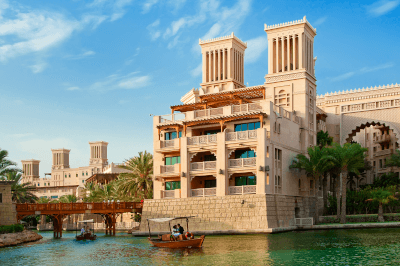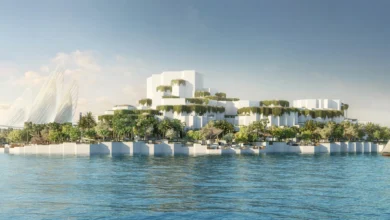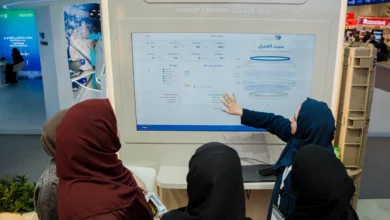
Skyward Bound: The Rise of Vertical Living in Urban Utopias
As urban populations continue to soar, cities around the world are facing a critical challenge: how to accommodate the growing number of residents in a limited amount of space. The answer lies in vertical living, a concept that has gained significant traction in recent years. By constructing soaring skyscrapers and innovative high-rise buildings, urban planners and architects are redefining the way we live, work, and play in the concrete jungles.
With the rise of vertical living, urban utopias are taking shape, transforming the very fabric of our cities. This article delves into the benefits, challenges, and design innovations associated with this architectural revolution. From maximizing limited space to promoting sustainability, vertical living offers a range of advantages. However, it also presents its fair share of obstacles, including social cohesion and infrastructure requirements. Nevertheless, designers are constantly pushing the boundaries of what is possible, incorporating multi-purpose spaces, green areas, and smart technology integration to create the cities of tomorrow.
Join us as we explore the fascinating world of vertical living, where the sky becomes the limit and urban utopias take shape. From the soaring towers of glass and steel to the bustling communities that thrive within, this article uncovers the remarkable journey of vertical living in our modern society. Buckle up as we ascend to new heights and discover the boundless potential of urban architecture.
II. Benefits of Vertical Living
A. Maximizing Limited Space
One of the most significant advantages of vertical living is its ability to maximize limited space in densely populated urban areas. As our cities become more crowded, traditional horizontal expansion becomes increasingly impractical and unsustainable. Vertical living offers a solution by allowing us to build upwards and make the most of the available land.
By constructing tall buildings, we can accommodate a larger number of residents, businesses, and amenities within a smaller footprint. This not only addresses the growing demand for housing but also provides opportunities for commercial and recreational spaces. With vertical living, we can create vibrant, self-contained communities that offer a range of facilities and services within walking distance, enhancing convenience and quality of life.
B. Reducing Urban Sprawl
Vertical living plays a crucial role in curbing urban sprawl, which is a pressing concern in many cities worldwide. As populations continue to grow, cities must expand to accommodate the increasing number of residents. However, horizontal expansion leads to the destruction of natural habitats, increased pollution, and the loss of agricultural land.
By building upwards instead of outwards, vertical living allows us to preserve valuable green spaces and protect the environment. It helps maintain the balance between urban development and nature, ensuring that future generations can enjoy a healthy and sustainable environment.
C. Promoting Sustainability
Vertical living promotes sustainability on multiple fronts. Firstly, tall buildings can be designed to incorporate energy-efficient features such as solar panels, rainwater harvesting systems, and smart technologies that optimize energy consumption. This reduces the ecological footprint of the residents and contributes to the overall sustainability of the city.
Secondly, vertical living encourages alternative modes of transportation. Concentrating a large number of people in a limited area makes public transportation more viable and attractive. With efficient public transit systems, residents are more likely to rely less on private vehicles, reducing traffic congestion and air pollution.
Lastly, vertical living facilitates the development of mixed-use communities. By integrating residential, commercial, and recreational spaces within the same building or complex, it reduces the need for long commutes and encourages a more balanced work-life environment. This not only saves time and energy but also fosters a stronger sense of community and social interaction.
The benefits of vertical living are far-reaching. It maximizes limited space, reduces urban sprawl, and promotes sustainability in both environmental and social aspects. As cities continue to evolve and grow, embracing vertical living can lead us towards a more efficient, vibrant, and sustainable urban utopia.
III. Challenges of Vertical Living
While vertical living has its advantages, it also presents unique challenges that need to be addressed in order to create thriving urban utopias. In this section, we will delve into some of the key challenges associated with vertical living.
A. Social Cohesion
One of the primary concerns with vertical living is the potential impact on social cohesion. In traditional horizontal neighborhoods, residents often have direct contact with their neighbors, fostering a sense of community and connection. In vertical living environments, however, residents may feel isolated or disconnected from their neighbors due to the physical separation of individual units and shared spaces.
To overcome this challenge, urban planners and architects must prioritize the creation of communal spaces that encourage social interactions. Incorporating shared amenities such as rooftop gardens, common areas, and community centers can provide residents with opportunities to interact, build relationships, and foster a sense of belonging.
B. Infrastructure Requirements
Vertical living demands robust infrastructure to support the needs of its residents. The increased population density in high-rise buildings necessitates efficient systems for water supply, waste management, and energy distribution. Adequate infrastructure is crucial for maintaining a high standard of living and ensuring the sustainability of vertical living communities.
Urban planners and city officials must carefully consider the infrastructure requirements of vertical living developments from the early stages of planning. This includes investing in reliable utility networks, waste management systems, and sustainable energy solutions that can meet the demands of a vertical community.
C. Vertical Transportation
Vertical transportation is another significant challenge in vertical living environments. The efficient movement of residents within high-rise buildings is essential to ensure accessibility and convenience. Traditional elevator systems may face limitations and bottlenecks when dealing with the high volume of residents in towering structures, leading to delays and frustrations.
To address this challenge, architects and engineers are exploring innovative solutions such as sky lobbies, double-decker elevators, and smart elevator systems that can optimize efficiency in vertical transportation. These advancements not only enhance the convenience of vertical living but also minimize congestion and wait times.
Despite these challenges, the benefits of vertical living outweigh the obstacles. By proactively addressing social cohesion, infrastructure requirements, and vertical transportation, urban planners and architects can create harmonious and sustainable urban utopias where residents can thrive.
IV. Design Innovations in Vertical Living
As urban populations continue to soar, the need for innovative design solutions in vertical living becomes increasingly crucial. Architects, engineers, and urban planners are embracing this challenge and pushing the boundaries of what is possible in creating sustainable and livable urban utopias. Here, we explore some of the most exciting design innovations that are revolutionizing the way we think about vertical living.
A. Multi-purpose Spaces
One of the key design innovations in vertical living is the concept of multi-purpose spaces. Traditionally, urban dwellings have been limited by their square footage, forcing residents to compromise on functionality. However, with the rise of vertical living, architects are reimagining spaces to serve multiple purposes. By incorporating flexible layouts, convertible furniture, and movable partitions, apartments can transform from workspaces during the day to cozy living areas at night. This adaptability not only maximizes the limited space available but also enhances the overall quality of life for residents.
B. Green Spaces
Vertical living doesn’t have to mean sacrificing access to nature. Designers are increasingly incorporating green spaces into high-rise buildings, creating urban oases that provide numerous benefits. Rooftop gardens, vertical forests, and sky parks not only offer residents a respite from the concrete jungle but also improve air quality, regulate temperature, and promote biodiversity. These green spaces not only contribute to the mental and physical well-being of residents but also help to mitigate the environmental impact of urbanization.
C. Smart Technology Integration
As technology advances at an unprecedented pace, it is only natural that it finds its way into vertical living. Smart technology integration is transforming the way we interact with our living spaces, making them more efficient, comfortable, and convenient. From automated lighting and temperature control systems to smart home assistants that manage everything from grocery deliveries to energy consumption, technology is enhancing the functionality and sustainability of vertical living. Additionally, smart systems can optimize resource allocation, reducing energy consumption and minimizing waste.
Design innovations in vertical living are reshaping the urban landscape, offering solutions to the challenges posed by rapid urbanization. Multi-purpose spaces, green areas, and smart technology integration are just a few examples of how architects and urban planners are reimagining the way we live in dense urban environments. By embracing these innovations, we can create sustainable and livable urban utopias that maximize limited space, reduce urban sprawl, and promote a harmonious coexistence between humans and nature. As we continue to reach for the sky, the possibilities for vertical living are limited only by our imagination.
The rise of vertical living in urban utopias presents a compelling solution to the challenges faced by rapidly growing cities. This architectural trend offers numerous benefits that are crucial in maximizing limited space, reducing urban sprawl, and promoting sustainability.
One of the most significant advantages of vertical living is its ability to maximize limited space. With land becoming increasingly scarce in urban areas, building upwards allows for greater population density without encroaching on valuable land resources. Vertical living also encourages the efficient use of space, with clever design strategies such as multi-purpose rooms and modular furniture, ensuring that every square foot is optimized for functionality.
Vertical living plays a crucial role in reducing urban sprawl. By building upwards rather than outwards, the need for new developments on the outskirts of cities is significantly reduced. This helps to preserve natural habitats, protect agricultural land, and maintain the integrity of surrounding ecosystems. Furthermore, concentrating populations vertically promotes a sense of community and fosters social cohesion, as residents live in close proximity to each other and are more likely to interact on a regular basis.
Vertical living also offers a platform for promoting sustainability. High-rise buildings can incorporate green spaces, such as rooftop gardens and vertical forests, which help to mitigate the heat island effect, improve air quality, and provide recreational areas for residents. Moreover, the integration of smart technologies in vertical living developments allows for energy-efficient systems, such as smart lighting and renewable energy generation, reducing the ecological footprint of these structures.
It is important to acknowledge the challenges that come with vertical living. Ensuring social cohesion within high-rise communities requires thoughtful planning and design. Creating communal spaces, organizing social events, and fostering a sense of belonging are essential in overcoming potential isolation and fostering a strong community spirit.
Furthermore, the infrastructure requirements for vertical living must be carefully considered. Adequate water and sewage systems, waste management facilities, and reliable power supply are essential to support the growing population in these high-rise developments. Additionally, vertical transportation systems, such as elevators and escalators, need to be efficient and reliable to ensure smooth movement within the building.
The rise of vertical living in urban utopias offers a promising solution to the challenges faced by rapidly growing cities. By maximizing limited space, reducing urban sprawl, and promoting sustainability, vertical living presents a viable alternative for future urban development. With the integration of design innovations, such as multi-purpose spaces, green areas, and smart technologies, vertical living can provide residents with an enhanced quality of life while contributing to the overall well-being of the planet. As cities continue to evolve and expand, embracing vertical living may be the key to unlocking a sustainable and prosperous future for urban dwellers.





